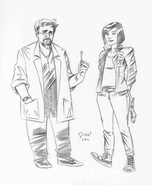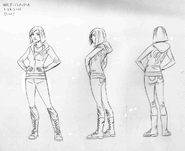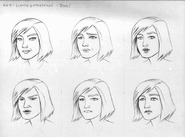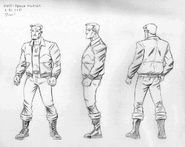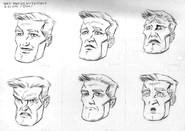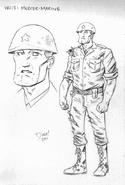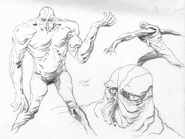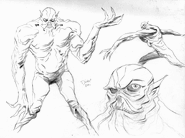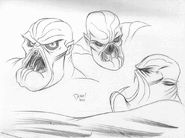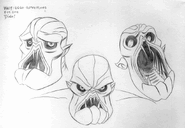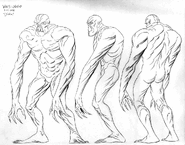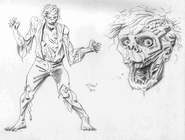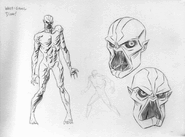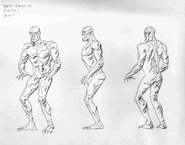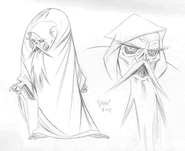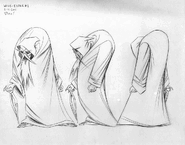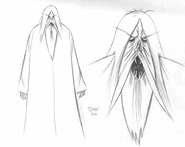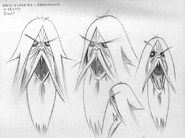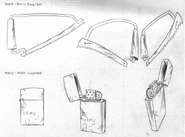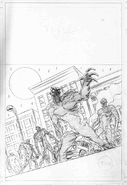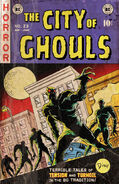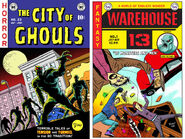Of Monsters and Men was a Warehouse 13 webisode series that premiered on Syfy's website. It was presented by Toyota.
Link to the full series without the bonus chapter here.
Synopsis
Cast
- Eddie McClintock as Pete Lattimer
- Saul Rubinek as Artie Nielsen
- Allison Scagliotti as Claudia Donovan
- Genelle Williams as Leena
- Ivan Sherry as Frank Mercer
- Noah Cappe as Uggo the Ghoul
- Hadley Kay as Elder #1
Plot
| Click to show |
|---|
|
Insert the entire full recap here. |
Artifacts Featured
- Fredric Wertham's Spinner Rack: Transformed by Wertham's hatred for comic books, the sign on top of the spinning rack acts as a battery for it, causing the rack to suck in anyone or anything around it into any comic book, provided someone tried to read one near it. If the victim(s) does not find a way to escape the comic book in time, they will be trapped in the comic book forever. Main artifact of this episode.
- Frank Mercer's Lighter: Can suck the souls of any living creature when flicked open. Created by Frank Mercer during his three year imprisonment during WW2 by his intense experiences and emotions. Collected by Claudia, Pete, and Artie.
- Leonardo da Vinci's Perpetual Motion Machine: Can be used in conjunction with half-a-dozen Standing Mirrors and jumper cables to redirect the energy flow of an artifact. Shown to generate its own power when spun.
- Standing Mirrors: Six were used in conjunction with Leonardo da Vinci's Perpetual Motion Machine and jumper cables to redirect the energy flow of an artifact.
- The Phoenix: Grants immunity to heat and fire to whoever holds it, but takes the life of others nearby in exchange for its protection. Advertised on the closing page of a comic book at the start of the credits sequence.[1]
Trivia
- The comic City of Ghouls appears during the Windwill scene in Grand Designs webisodes.
- The series takes place sometime after "For The Team", as Claudia mentions Godfrid's Spoon, and sometime before "Love Sick", as Claudia has not yet upgraded the Teslas to no longer need recharging after use.
- Based on the "I Like Ike for President" sign[2] seen in Chapter 7, the comic itself takes place sometime between 1950 and 1952 (the year Dwight D. "Ike" Eisenhower became President).
- As Wertham's Spinner Rack was implied to have gained its power from, or around the time of, the publication of Seduction of the Innocent (1954), City of Ghouls (and many of the other comic books included with the Rack) may have been published in that same year.
- The series (or rather, the comic) contains multiple comic book references.
- Artie, Claudia, and Pete are transported to a drugstore called "Gaines Drug"[3], named after William Gaines, an American publisher and co-editor of EC Comics, and his son Max Gaines, a pioneering figure in the creation of the modern comic book who devised the first four-color, saddle-stitched newsprint pamphlet, a precursor to the color-comics format that became the standard for the American comic book industry.
- In Chapter 8, a section of the Blue Skies Sanitarium for the Deviant is named the "Krigstein Wing"[4] after Bernard "Bernie" Krigstein, an American illustrator and gallery artist who received acclaim for his innovative and influential approach to comic book art, notably in EC Comics.
- City of Ghouls was published by "BC Comics", "An EC Comics Homage"[5]. Entertainment Comics, also known as EC Comics, was an American publisher of comic books, which specialized in horror fiction, crime fiction, satire, military fiction, and science fiction from the 1940s through the mid-1950s, notably the Tales from the Crypt series. It was initially owned by William Gaines and specialized in educational and child-oriented stories, but after his death and his son Maxwell took over, the company began printing more mature stories, delving into genres of horror, war, science-fiction, and others.
- Frank Mercer, the true antagonist of the story, may have been named after Francis "Frank" Castle (known as The Punisher, an anti-hero of Marvel Comics)[6] and Owen "Boomerang" Mercer, son of the original Captain Boomerang and member of the Suicide Squad (a villain or anti-hero of DC Comics).[7]
- In the Bonus Chapter, Frank Mercer states that after his capture by Nazi forces, he was sent to the labor camp at Berga, Thuringia, Germany. Although he refers to it as Stalag IX-B, this labor camp was actually where prisoners were transferred to from IX-B in Hesse, Germany.
- During its operation, Stalag IX-B was the site of "a segregation and removal of Jewish-American troops who, once identified", were taken to Berga. This may imply that Mercer himself was Jewish.
Gallery
Dean Haspiel's article on designing "Of Monsters and Men".
References
- ↑ https://warehouse13.wikia.com/wiki/File:Final_Page_Ads.png
- ↑ https://warehouse13.wikia.com/wiki/File:I_Like_Ike_1.png
- ↑ https://warehouse13.wikia.com/wiki/File:Gaines_Drug_3.png
- ↑ https://warehouse13.wikia.com/wiki/File:Krigstein_Ward_1.png
- ↑ https://warehouse13.wikia.com/wiki/File:33WH13CITYOFGHOULSfinalsm.jpg
- ↑ https://en.wikipedia.org/wiki/Punisher
- ↑ https://en.wikipedia.org/wiki/Captain_Boomerang#Owen_Mercer
